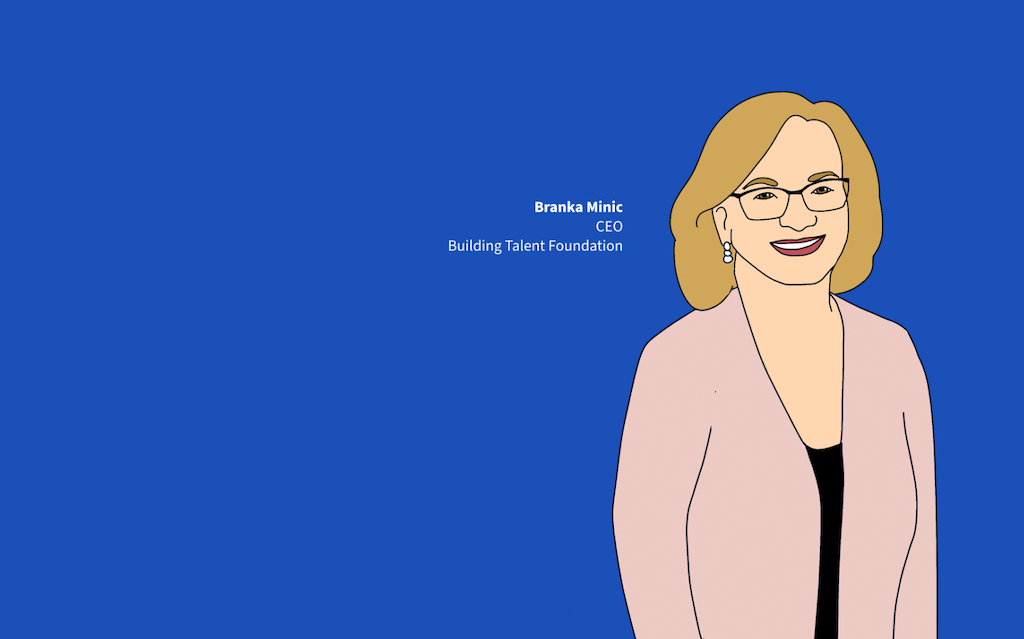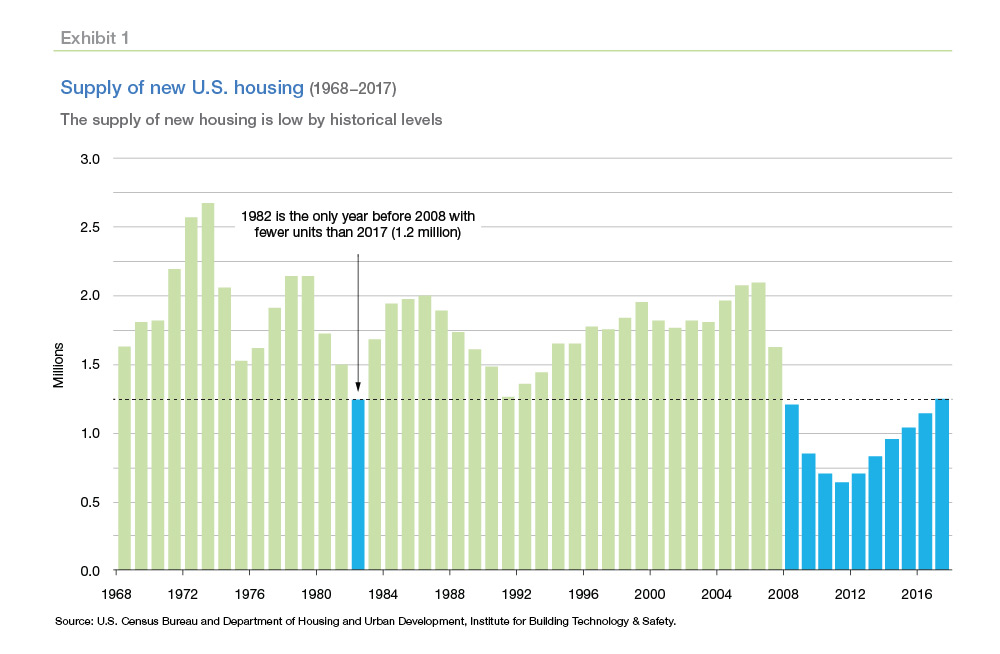Leadership
New Building Talent Foundation Push: Upskill Current Frontline Workers
A new "Blueprint for Upskilling the Homebuilding Workforce" focuses not on recruiting new workers but on the untapped potential of those already on the job sites to impact and improve business and operational outcomes.

There's an apocryphal famous quote attributed to Republican Senator Everett Dirkson, who served as Senate minority leader from 1959 to 1969.
Dirksen allegedly quipped about overspending by the federal government, ...
A billion here, a billion there, and pretty soon you’re talking real money.”
That quote – whether or not Dirkson did or would have uttered it – suggests a next-generation corollary variation for our times:
Under-build 370,000 homes a year, and pretty soon you're talking real problems."

And the thing is, those problems' root causes, follow-on effects, direct and indirect symptoms, self-fulfilling prophetic feedback loops, and inertial counter-forces are a big jumble — so big that those unbuilt 370,000 homes each year stand a good chance of being an even bigger GenZ challenge than they are for the collective force of today's Millennials, GenX, Baby Boom, etc. to solve.
This makes true learning, discovery, and action relative to those 370,000 unbuilt homes each year so critical. The reason is that, without new learning and discovery and, yes, change in action, the fix is in for the community's current challenges to eat solutions alive ... perpetually, everywhere, and all at once.
The homebuilding industry in the United States faces a critical juncture. Post-Great Recession, the undersupply of skilled labor has emerged as a major bottleneck, contributing to escalating costs and persistent underbuilding. Today, trade groups estimate a shortage of around 450,000 skilled workers on construction sites, a gap that has significantly hindered production capacity, inflated new home prices, and perpetuated a housing shortage that leaves us millions of units short of what's needed for market equilibrium.
A new report titled "Blueprint for Upskilling the Homebuilding Workforce" sheds light on a crucial opportunity to address this crisis. This report focuses not on the recruitment of new workers but on the untapped potential of those already on the job sites – the contractors, skilled and semi-skilled frontline workers, trade crews, installers, and others whose "skills gaps" slow down construction, increase errors, and lead to costly rework. It’s estimated that the cost of rework alone adds an average of $21,000 to the cost of every new home.
Two high-level takeaways come through in the Blueprint initiative:
- The undersupply of frontline workers is not the most salient challenge standing in the way of those 370,000 new homes per year that are not getting built. Rather, it's construction capability—in the form of current frontline team members, technologies, and learning performance systems and processes—that can reset the trajectory of production in the right direction.
- A very basic understanding of marketing's role and rules in engaging and generating value from associates and team members means recognizing that customer retention—i.e., team member retention, engagement, and improvement—is a more valuable impactor of business growth than investment in acquiring new customers.
This initiative isn't just about bringing new talent into the industry; it's about upskilling and reskilling the existing workforce," says Branka Minic, CEO of Building Talent Foundation. "By focusing on the current tradespeople, we can address the most critical skills gaps and significantly improve productivity and quality on job sites."
The Scope of the Problem
The report documents the impact of these skills gaps through comprehensive data collection and analysis. A survey of Leading Builders of America members, which contributed 75,790 data points, aimed to identify opportunities to reduce the frequency and severity of errors made by frontline workers. This survey was followed by qualitative focus group discussions with various stakeholders including general contractors, builders, suppliers, employers, and educators. The survey responses closely matched the geographic distribution of single-family home starts in the U.S., ensuring a representative sample.
The findings are revealing.
- Blueprint and Instructional Reading Gaps:Potential Frequency of Errors: 60% of respondents indicated that a gap in reading blueprints or work instructions leads to severe errors.
- Trade-Specific Insights:Framing: Identified as the trade with the most potential to reduce frequent and impactful errors, with issues related to reading plans and following fastener patterns.Foundation and Painting: Foundation errors, while less frequent, have severe impacts. Painting, though frequently error-prone, has less severe consequences.
- Soft Skills Importance:Reliability and Problem-Solving: 93% of respondents highlighted the importance of soft skills, with reliability and dependability being almost unanimously valued.
Our findings highlight the need for improvement in fundamental skills in blueprint reading and following work instructions," says Jason Krieger, Director of Monitoring, Evaluation, & Research, Building Talent Foundation. "Addressing these through targeted training and clear communication can reduce costs and improve efficiency across the board."
A Path Forward
The analysis intends to spotlight this report as a critical lesson for strategic leaders in the homebuilding industry. Addressing the human production capability constraints begins with recognizing and improving the skills of the current workforce. By identifying the strengths and weaknesses of these workers and creating pathways for their improvement, the industry can enhance productivity, accuracy, and quality, ultimately leading to better cost control and an increase in housing supply.
This initiative is not just a project; it's a critical step towards transforming our industry's workforce," Branka Minic says. "By focusing on upskilling, we are empowering our current workers to meet the evolving demands of construction, ultimately leading to higher quality homes and a more sustainable industry."
The "Blueprint for Upskilling" is a joint initiative of the Building Talent Foundation, sponsored by Leading Builders of America, with financial support from Weyerhaeuser. This initiative reflects a significant step in the right direction, echoing the time-tested business principle that growth often comes from investing in current assets.
This is about building a future where skilled tradespeople are valued and supported," Minic says. "Our goal is to create a robust pipeline of talent that not only meets the current needs but is also prepared for future challenges, ensuring the longevity and success of the homebuilding sector."
Recommendations from the Discovery Process
- Training Approaches:
- Micro-Training: Repeated, mixed-method micro-training sessions are more effective than single, lengthy training programs.
- Leveraging Technology: Incorporating digital materials, including videos and augmented reality, alongside traditional printed materials to enhance learning.
- Certification and Standards:
- Industry-Wide Certifications: Developing and adopting industry-wide employer certifications for trades, rather than relying solely on manufacturer-specific certifications.
- Communication and Inspection:
- Clear Instructions: Ensuring builders provide clear, precise, and timely instructions to trades.
- Frequent Inspections: Regular inspections by builder representatives and third-party auditors, coupled with immediate training sessions based on audit results.
- Educational Partnerships:
- Collaborations: Strengthening partnerships between industry, educators, and manufacturers to align curricula with hiring needs and new technologies.
- Apprenticeships: Promoting structured apprenticeship programs that combine on-the-job training with mentorship.
- Focus on Soft Skills and Safety:
- Soft Skills Training: Emphasizing the development of soft skills such as communication, problem-solving, and reliability.
- Safety Training: Instilling a strong focus on safety practices and the reasons behind them throughout training programs.
- Funding and Economic Support:
- Access to Resources: Identifying and leveraging state and federal funds for on-the-job training and upskilling, and advocating for increased investment in workforce development.
We expect this initiative to set a new standard in workforce development within the homebuilding industry," Krieger says. "By focusing on practical, hands-on training and fostering strong partnerships, we believe we can significantly enhance overall productivity, ultimately contributing to more affordable and higher quality housing."
The "Blueprint for Upskilling the Homebuilding Workforce" report offers a roadmap for strategic leaders in the homebuilding industry to tackle the pressing issue of workforce skills gaps. By investing in the current workforce and fostering industry-wide collaboration, the sector can enhance its productivity, reduce costs, and ultimately add those currently MIA 370,000 new home units each year that can begin to alleviate the housing affordability crisis.
Upskill 10,000 builder contractor frontline workers here and 10,000 there, and pretty soon you're talking real capability change ... with apologies to the late Senator Dirkson.
MORE IN Leadership
10 Bold Ideas Tackling Housing Affordability And Access Now
From AI to hempcrete, these 10 ideas show how innovation in design, finance, and policy can open the door to housing affordability.
Sumitomo Forestry Sharpens U.S. Focus With DRB Move
Strategic clarity replaces portfolio sprawl as Sumitomo bets big on U.S. scale and integration.
Homebuilders and Insurance: A New-Reality Cost To Stay Ahead
Exclusive insights from Westwood Insurance Agency’s Alan Umaly and MSI’s Naimish Patel reveal why homebuilders must rethink insurance, resilience, and risk management—or risk losing buyers in an increasingly volatile market.
